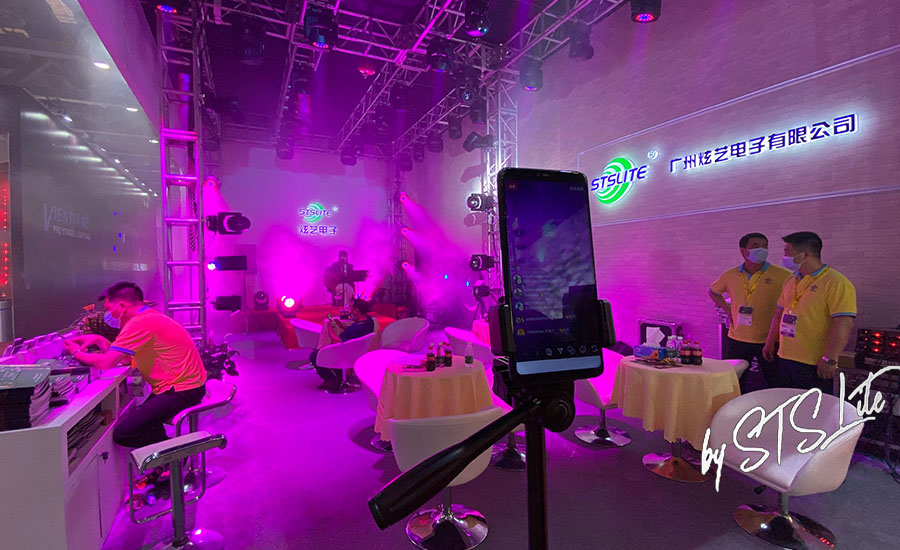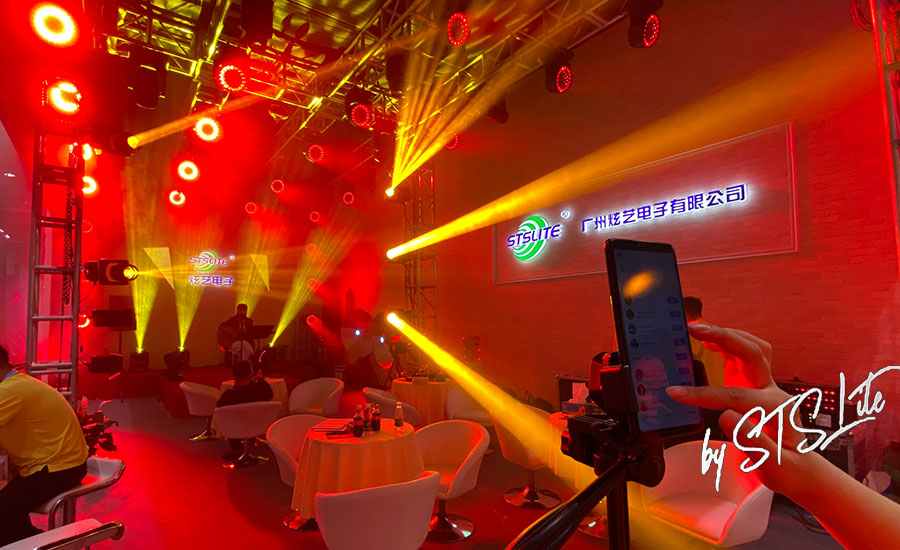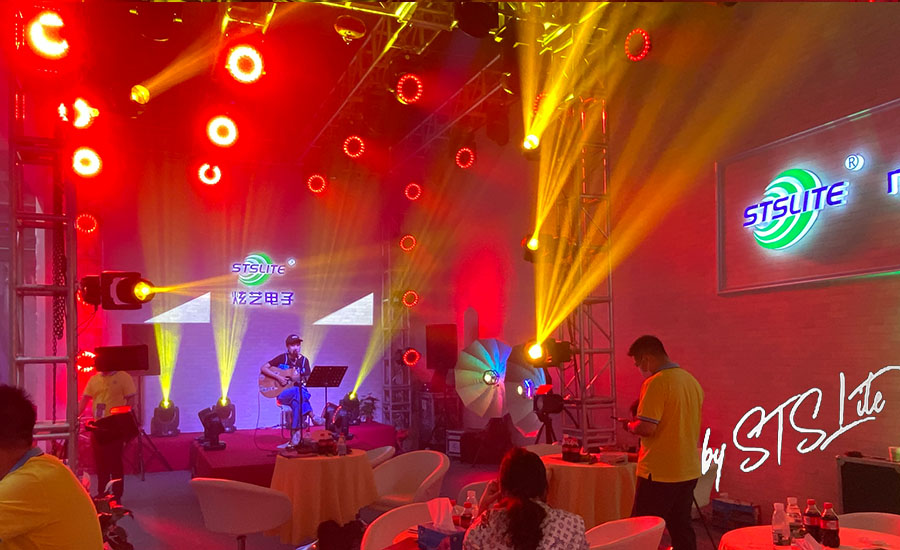In the past, the arrangement of stage lighting was very random and plastic, which increased the difficulty of stage lighting arrangement. In order to improve the effect and speed of stage lighting in classical drama, stage lighting can learn from western drama lighting technology and follow the basic steps and laws.

1、 Steps and rules of stage light distribution
(1) Determine the main light. Stage main light refers to the dominant light source on the stage, the main tone light source. It plays a leading role in the expression of the shape, contour and texture of the object. Therefore, it is the main tone of the lighting for the main set and performance on the stage. In stage lighting, only when the main light is determined first, can it be possible to add auxiliary light, background light, contour light and so on.
(2) Select the background light. Background light refers to those contrast light sources used to support the scenery behind the main body of the stage. It can render the environment and atmosphere. When the objects covered by the main light source and auxiliary light source on the stage form the overall tone of the stage, in order to better emphasize the stage atmosphere, it is often necessary to carefully arrange the background light to strengthen the overall coordination and comparison of the stage.
(3) Outline light. Contour light refers to the side light source or inverse light source used to separate the stage object from the background. The outline light is usually projected against the light from the background and above the actors, and the light level is generally one or more, mainly for the purpose of generating a bright outline of the subject. Contour light can increase the sense of three-dimensional, space and contrast of stage scenery and actors. The outline light is mostly directly illuminated by the original light source spotlight or set off by the reflected light. The light quality of spotlight is strong and hard, and the reflected light is weak and soft. When the spotlight is used, it often makes the set and actors on the stage have a heavy projection. Therefore, when setting the light, we should pay attention to weaken or eliminate these messy projections. We can appropriately adjust the lamp position, or skillfully use the reflective props, clothing, setting, etc. on the stage to make their reflection become the light source for the outline of the stage set and actors, and naturally project it onto their outline, so as to obtain unexpected stage effects. When reflected light is used, it often produces silhouette effect on the set and actors on the stage. Therefore, for the distribution of reflected light, pay attention to the intensity and uniformity of reflected light; The background color can be adjusted appropriately, and the reflective props, clothes, setting settings, etc. on the stage can be skillfully used to increase the contour luminosity and make up for the deficiency of contour light, so as to obtain satisfactory stage effect. Sometimes, soft light can also be used as contour light to reduce the formation of shadows. When distributing the outline light, pay attention to the light contrast between the outline light and the main light. Generally, the outline light should be brighter than the main light. At the same time, the color of contour light is generally affected by the color of the set on the stage and the objects around the actors, and its reflection often has a greater impact on the formation of contour light color. Of course, outline light is not necessary for all sets or actors on the stage. If it is not used properly, it will add to the snake.
(4) Use auxiliary light. Since the main light will produce shadows and hide the details and expressions of stage objects, it is generally necessary to add auxiliary light sources on the opposite side of the main light on the stage, so as to improve the level and contrast of stage shadow surface.
(5) Add decorative light. Decorative light mainly refers to the light source used to decorate the parts or details of some objects on the stage. It does not aim to improve the dark brightness of stage objects, but to make up for the shortcomings of main light, auxiliary light, background light and contour light in shaping the image on the stage and increase the artistic effect of stage special space modeling. Decorative lights generally use special lamps, such as effect lamps, which have strong modeling function requirements.
(6) Overall regulation of light balance. Light balance refers to the overall balance of the brightness and color relationship between various light sources on the stage after they are projected on the stage. The regulation of light balance, that is, adjusting the brightness, color difference and dynamic and static relationship of various light sources, is a complex work. It requires some skills and experience. The overall regulation of light balance can create natural and wonderful lighting effects on the stage. It is also the last important step of stage lighting.

2、 Factors needing attention in regulating light balance:
(1) Control the illumination area and light diffusion. The size of lighting area is directly related to the nature of stage lighting. The chromatic aberration of illumination affects the relationship between light dark contrast and chromatic aberration of stage objects. The light contrast of stage objects can be better controlled by adjusting the light source illumination area and light diffusion. When a low contrast light effect is required on the stage, the illumination area of the light source is adjusted to increase the degree of light diffusion, and the stage object is covered by various lights. When high contrast is required, the light source area is reduced and the light diffusion degree is reduced, so that the light has a certain directionality, which increases the three-dimensional modeling of light and shadow and the expressiveness of stage objects.
(2) Ensure sufficient lighting brightness of the stage. Ensuring sufficient lighting brightness of the stage can enable us to freely create natural and wonderful lighting shapes required by the stage through the regulation of various light sources. On the contrary, if we can not ensure sufficient lighting brightness of the stage, it will inevitably bring a lot of inconvenience to the stage setting and stage performance, thus affecting the clarity of dance language expression.
(3) Select appropriate lamps. The selection of lamps and lanterns is related to the pursuit of light quality on the stage and whether the adjustment of light is convenient, scientific and natural. On the stage, especially for the selection of decorative effect lamps, different decorative effect lamps often have different modeling functions and application ranges. Good lamps not only provide high-quality light source, but also easy to control the effect. Try to make one lamp multi-purpose, and even cut according to the lighting needs and the shape of the object, And the illuminated object is locally filled with light to freely control the effect of light domain.
(4) Minimize the use of lamps. In the stage lighting, it is not the more lamps, the better, but the simpler the lamps, the better. Too much light distribution will cause messy projection on the stage, which is difficult to eliminate and affect the performance. When projection is inevitable on the stage, the clever dance lighting design will make use of the natural reflection of the set, clothing and props to make up the necessary light for the illuminants. Therefore, the regulation of light balance is not limited to the adjustment of lamps and light levels on the stage, but also includes the adjustment and utilization of lighting objects on the stage.

Copyright © 2021 GuangZhou STS Lighting Equipment Co.,Ltd. | All Rights Reserved